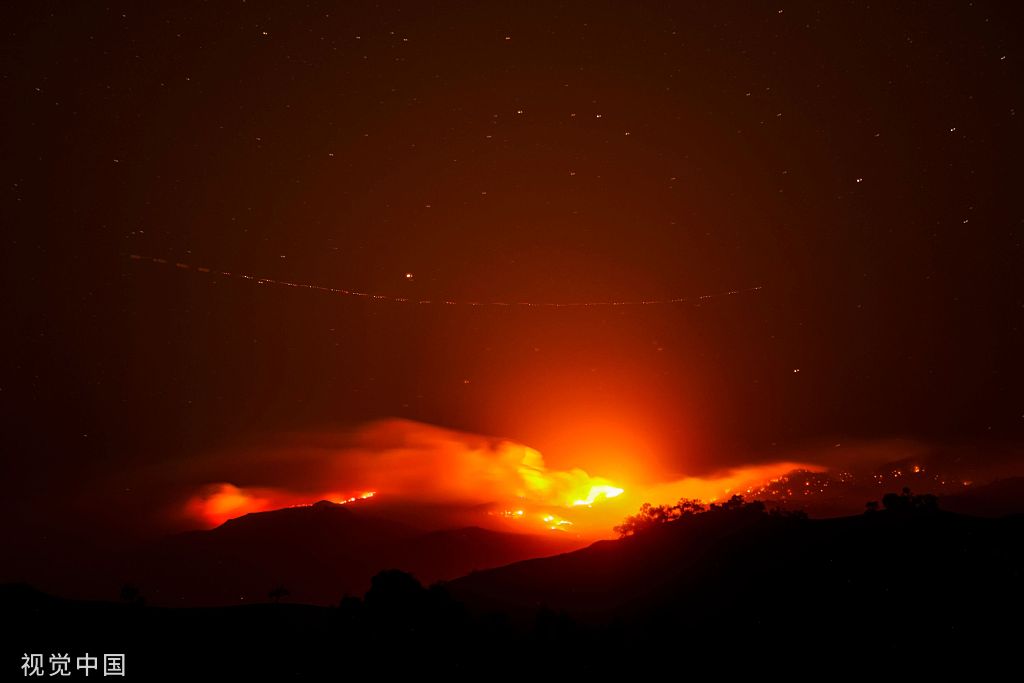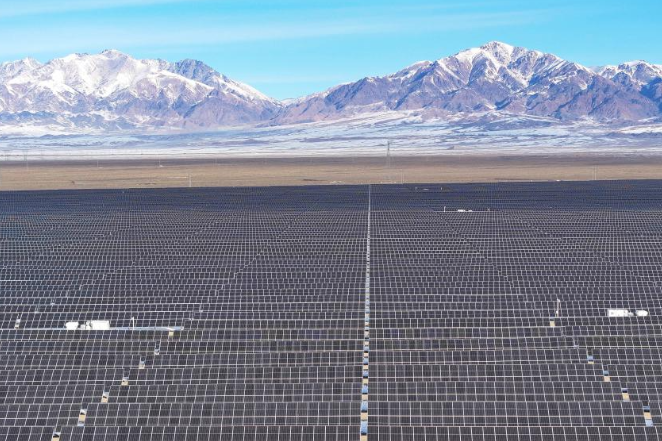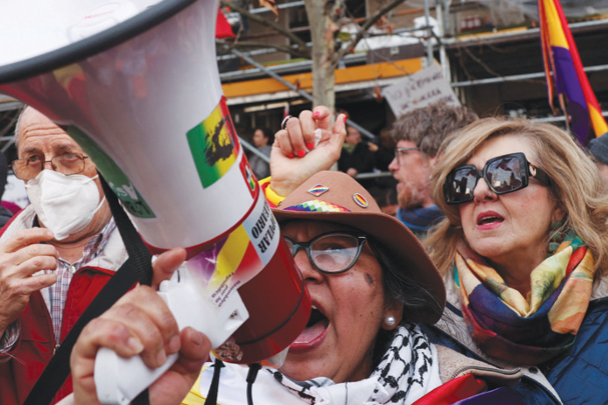Pointing fingers as California frequently burns


Utility company Pacific Gas & Electric regularly shuts down household and commercial power. Cities ban firecrackers on a celebrated ethnic holiday. Schools and workplaces close due to blackouts and hazardous air quality, and residents are forced to evacuate to shelters for weeks or even months.
Sounds surreal?
The doomsdaylike episodes are not only real, but are repeating themselves yearly as Californians wage a war against regular firestorms, a phenomenon they call "the new normal".
Since early October, dozens of large-scale wildfires — the Kincade Fire, the Easy Fire, the Getty Fire and the Hillside Fire, for instance — have engulfed the Golden State from Sonoma County in the north to San Bernardino in the south.
Aside from causing considerable loss of life and property, the infernos cannot be extinguished quickly.
Vidvat Masipeddi, 11, observed Diwali, a ritual to celebrate the Hindu festival of lights, without being able to set off firecrackers on Oct 27. San Jose, the city where Masipeddi and a considerable number of people of Indian heritage live, banned firecrackers due to possible fire hazards.
On Thursday, according to the Riverside County Sheriff's Department, two new fires broke out near Los Angeles, fueled by wind gusts of up to 112 kilometers per hour and forcing the evacuation of about 30,000 residents.
The annual catastrophes have left many Californians frustrated. They live in a state with the fifth-largest economy in the world, with roughly $3 trillion in GDP in 2018, one that is home to the world's most valuable companies, revolutionary technology and innovation, and diverse cultures and ethnic groups.
"What has gone wrong?" asked Summeet Badwal, tech lead at a Silicon Valley startup. "Isn't it a shame that the California government collects hefty taxes from us but fails on everything from management, planning and protecting its people, us?"
Badwal is not alone. Many residents are venting their resentment against the government, the ruling Democrats, in California's case, and Governor Gavin Newsom for answers and solutions.
Badwal and like-minded citizens suspect that inefficient forestry governance in California and aggressive environmental advocates who fiercely oppose the thinning and clearing of trees and plants, are major contributors to the yearly fire outbreaks.
California's increasingly dry forests are large-scale tinderboxes in disguise, as some researchers noted.
According to a 2018 study released by the Little Hoover Commission, an independent agency, forests in California "are reaching a breaking point". The study concluded that controlled burning and more government efforts and funding are needed to address the problem.
To the public's dismay, former governor Jerry Brown in 2016 vetoed a bipartisan wildfire management bill that would have legalized "prescribed burns", saying his administration had already taken similar actions.
Apparently, Brown's vow of action was not enough. In November 2018, the town of Paradise was ravaged by a sweeping fire that killed more than 80 people and damaged over 10,000 properties.
In one of his blunt tweets about the California fires, President Donald Trump wrote: "There is no reason for these massive, deadly and costly forest fires in California except that forest management is so poor."
Trump visited the devastated town of Paradise in late November. He told Brown and then governor-elect Newsom, who escorted him, to "remedy now or no more fed payments!"
The then-interior secretary Ryan Zinke echoed Trump by detailing obstruction by environmentalists. Zinke pointed out that whenever "we try to thin forests of dead and dying timber, or we try to sustainably harvest timber from dense and fire-prone areas, we are attacked with frivolous litigation from radical environmentalists, who would rather see forests and communities burn than see a logger in the woods."
"The so-called green obstinacy is evil," said Athena Lin, who volunteers often at several national parks.
She recounted a scene in the woods in Half Moon Bay, a scenic city an hour's drive from San Francisco, of how activists from an environmental agency tried to block a group of workers sent by forest management to trim dead trees.
"They (activists) were in costumes shouting their lungs out, dragged saws of lumberjacks, and lie down frantically muttering curses and slogans," Lin recalled. "Very dramatic."
The remarks by Trump and Zinke were criticized by firefighters, local politicians and green organizations.
A spokesperson for Brown called Trump "uninformed", saying that more than 60 percent of California's 33 million acres of forests are administered by the federal government, therefore rendering Trump's accusation groundless.
Newsom, who took office in January, and supporters from environmental advocacy groups reiterated that climate change was the ultimate cause of California's fires.
It's the climate change that causes more frequent and destructive fires, environmentalists insisted, citing rising temperatures, drought and seasonal gusty winds as major fire factors.
According to recent research published in the Earth's Future, the "extremely large and destructive" wildfires in California have increased fivefold since the 1970s.
"This trend was mainly due to an eightfold increase in summertime forest‐fire area and was very likely driven by drying of fuels promoted by human‐induced warming," it said.
Newsom also scolded PG&E's preemptive shutdown of power that affected about 1.5 million residents. "They simply did not do their job," the governor said. "We will hold them to an account that they've never been held in the past."
In January, San Francisco-headquartered PG&E announced that it was filing for Chapter 11 bankruptcy due to financial challenges associated with the catastrophic wildfires in Northern California in 2017 and 2018.

































